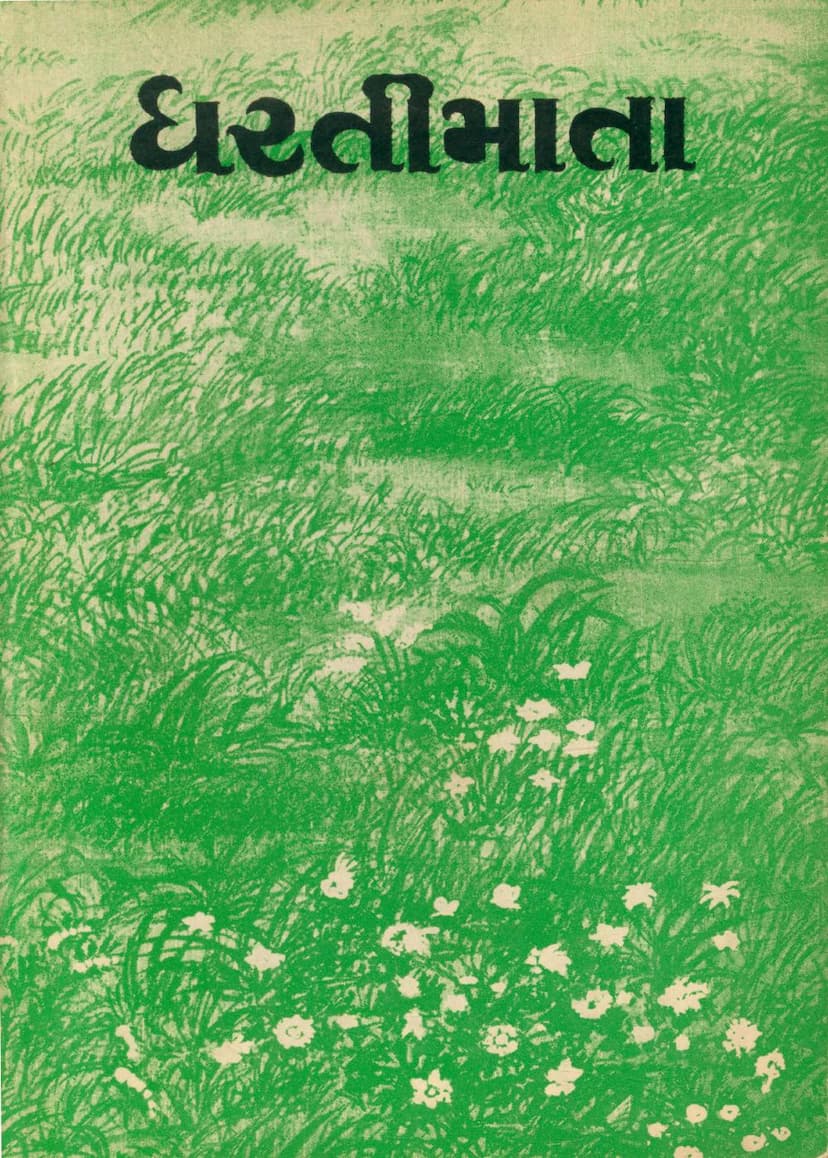Dharti Mata
Added to library: September 1, 2025

Summary
Here's a comprehensive summary of the Jain text "Dharti Mata" by Gopaldas Jivabhai Patel, based on the provided Gujarati text:
Book Title: Dharti Mata (Mother Earth) Author: Gopaldas Jivabhai Patel Publisher: Acharya J B Krupalani & Maganbhai Desai Memorial Trust Summary:
"Dharti Mata" is a profound work that draws heavily from the principles of natural farming and holistic living, largely influenced by Sir Albert Howard's seminal work "An Agricultural Testament." The book criticizes modern, chemical-intensive agriculture and its detrimental impact on soil, health, and the overall environment. It advocates for a return to natural, sustainable practices that honor the interconnectedness of soil, plants, animals, and humans.
Key Themes and Arguments:
-
Critique of Modern Agriculture: The book strongly condemns the modern agricultural approach, particularly the Green Revolution, which it argues relies heavily on chemical fertilizers, pesticides, and heavy machinery (like tractors). This approach, driven by a desire for increased yield, is seen as destructive to the soil's natural fertility and the health of both the environment and its inhabitants.
-
The Importance of Humus and Soil Health: A central tenet is the absolute necessity of maintaining and enriching soil humus. Humus, derived from the decomposition of organic matter through the action of earthworms, fungi, and bacteria, is presented as the foundation of fertile soil. This fertility, in turn, directly influences the health and resilience of crops, livestock, and ultimately, human beings. The book criticizes practices that deplete humus, such as excessive tilling and the burning of crop residue.
-
The "Great Law of Return" (Yajna): Drawing parallels with the Bhagavad Gita's concept of "Yajna" (sacrifice or offering), the author emphasizes the natural principle of giving back to the earth what is taken. This means returning organic matter to the soil to maintain its fertility, akin to how nature continuously recycles nutrients. Modern agriculture, by contrast, is seen as exploitative, taking without adequate replenishment.
-
The Interconnectedness of Life: The book highlights the continuous cycle of life, death, and renewal in nature. It asserts that the health of the soil is intrinsically linked to the health of plants, animals, and humans. A weak or depleted soil leads to weakened plants, which then nourish weakened animals and humans, making them susceptible to diseases.
-
Critique of Chemical Fertilizers and Pesticides: The author details how chemical fertilizers, while seemingly boosting immediate yields, ultimately harm the soil by killing beneficial microorganisms and earthworms. Similarly, pesticides, by aiming to kill pests, also eliminate beneficial insects and disrupt the natural balance. This reliance on chemicals creates a dependency, leading to a cycle of ever-increasing application and diminishing returns in terms of true health and vitality.
-
The Value of Indigenous and Natural Methods: The book praises traditional farming practices that have sustained communities for centuries. The use of cow dung as manure, composting, crop rotation, and allowing land to lie fallow are presented as time-tested methods that maintain soil fertility and ecological balance. The meticulous work of farmers in ancient civilizations like the Incas (with their terraced farming) and the Chinese (with their emphasis on returning all organic waste to the soil) is cited as examples of this wisdom.
-
The Role of Forests and Water Management: Forests are shown to be crucial for preventing soil erosion, regulating water cycles, and maintaining soil fertility. The destruction of forests is directly linked to soil degradation, desertification, and the disruption of water sources. The author also critiques large-scale irrigation projects that can lead to waterlogging and salinization of the soil.
-
Impact on Human and Animal Health: A significant portion of the book details how the degradation of soil fertility through modern agricultural practices leads to crops that are nutritionally deficient. This, in turn, affects the health of livestock that consume these crops, and ultimately, human health. Diseases in livestock and humans are often traced back to the depleted quality of the food produced from unhealthy soil.
-
Swadeshi (Self-Reliance) and its Dual Aspect: The concept of Swadeshi is discussed not only as using one's own country's products but also as not exploiting one's country's resources for excessive personal gain by selling them abroad. The author argues that natural resources belong to future generations as well, and exploiting them for immediate profit is akin to theft from one's own descendants.
-
Historical Perspective: The book draws upon historical examples of civilizations that rose and fell due to their relationship with the land. It contrasts the sustainable practices of some ancient cultures with the exploitative practices of others that led to their decline. The decline of Rome and the fate of Greece are cited as cautionary tales.
-
The "Madness" of Industrialization and Mechanization: The book criticizes the industrial revolution and the subsequent rise of mechanization in agriculture. While acknowledging the ingenuity, it laments the detachment from nature and the pursuit of profit at the expense of ecological balance and human well-being. The reliance on artificial inputs and the displacement of human labor by machines are viewed with concern.
-
A Call for a Paradigm Shift: Ultimately, "Dharti Mata" is a passionate appeal for a radical shift in agricultural and societal thinking. It urges a return to reverence for the Earth as a nurturing mother, the adoption of natural and organic methods, and a conscious effort to restore the balance that modern civilization has disrupted. The author believes that true progress lies not in conquering nature, but in living in harmony with it.
In essence, "Dharti Mata" is a comprehensive argument for ecological wisdom, advocating that the health of the Earth is inextricably linked to the health of all living beings, and that a conscious, respectful, and reciprocal relationship with nature is the only path to sustainable well-being.